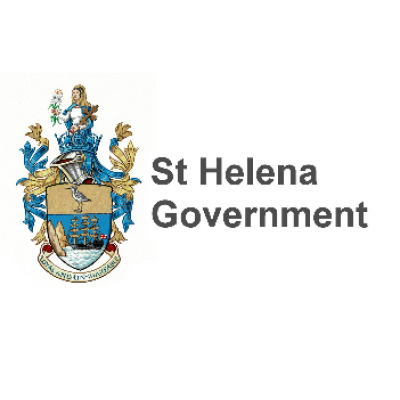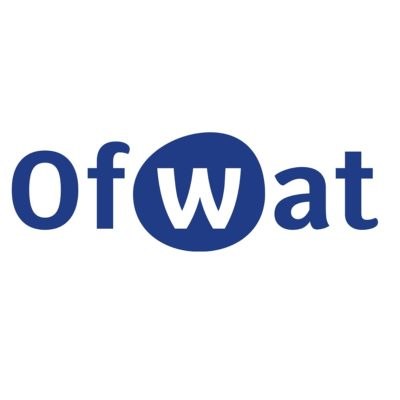The future of Initial Coin Offerings
Initial Coin Offerings (ICOs) have recently received a lot of attention due to the ban imposed by Chinese regulators. China is not the only country that is concerned about ICOs. On 12th September, the UK’s Financial Conduct Authority (FCA) issued a warning to consumers about the risks of ICOs.[1] Regulators from the USA, Canada, Japan, Hong Kong and Singapore have also alerted “investors” about the risks associated with ICOs, albeit not implementing bans.[2] In this article, we discuss the questions regulators need to consider in regulating ICOs. We begin by describing what an ICO is.
The term ICO can be widely applied in the literature. For the purposes of this article we think of an ICO as a “digital way of raising funds from the public using a virtual currency”, typically for funding a cryptocurrency project or application.[3] A start-up might typically start an ICO by creating a document (often referred to as its ‘white paper’) setting out its business model, founding team, development plan, etc. Those members of the public that are interested can respond to the ICO by purchasing ‘tokens’, typically using established cryptocurrencies such as bitcoins or ethers. The white paper will also detail the future token allocation (retention, token supply etc.) and the token pricing mechanism.[4] The company pays the project’s costs using bitcoin or ethers directly, or else by converting these to fiat currencies.[5]
The tokens issued in the majority in ICOs are application-specific. The applications are built on top of an existing blockchain technology. These application-specific tokens come in different flavours:
- A token can give its owner the right to access the final product of service. This is fairly typical and somewhat analogous to a club card, which gives the owner preferential usage rights for a particular service.
- Tokens can also give owners a share of the project’s profits. This is less common. The DAO (Decentralized Autonomous Organization) ICO was structured to enable investors to vote for the project that the DAO would fund, and distribute any profits to the owners of the DAO’s tokens. The SEC considered this as equivalent to a securities offering.[6]
- Tokens can be tradeable. Indeed, this is commonplace and it makes them somewhat similar to financial instruments. This means, as with financial instruments, they can be subject to speculative trading
ICOs and IPOs
People often refer to ICOs as the Initial Public Offerings (IPO) of cryptocurrencies (or virtual currencies).[7] Both ICOs and IPOs provide companies the funding they need for expansion. However, there are some notable differences between the two. The main one is that the shares issued in IPOs are considered as financial instruments or securities, meaning that they are subject to financial market regulation. There is a mature legal and regulatory framework for the IPO process and the equities issued. On the other hand, the status of tokens is still subject to debate. As such, token owners lack the investor protection available to equity investors. The absence of regulatory oversight has made ICO white papers more susceptible to fraudulent claims being made than in an IPO prospectus.
In IPOs the brokers usually approach only institutional investors or high-net-worth-individuals to buy the IPO shares. These investors would then carry out their own analysis on the company’s potentials and risks before making an investment decision based upon the prospectus. They would also have a say on the company’s future decisions through their voting powers. In ICOs on the other hand, tokens are usually offered to the general public. There is no requirement to ensure these individuals actually understand the risks involved. Nor do these ‘investors’ have any say over where the start-up is going. ICOs are more similar to crowdfunding in this aspect.
Lastly, ICOs usually happen at the early stage of the company development, while IPOs tend to happen when the company becomes more mature. This means projects using ICOs are likely to be inherently riskier. Despite ICOs being riskier projects they are not overseen by regulators, and yet are easily accessible to the public. The depth of understanding of this amongst ICO participants is unclear. (If it is well understood, then consumers are not suffering real detriment).
Despite these risks, ICOs are increasingly popular. Underpinning this is the rapid appreciation of virtual currencies. In 2017 to date, the price of the most popular virtual currency, bitcoin, has more than quadrupled, increasing from around £800 to almost £3800 before the Chinese authorities announced the ban.[8] Ether is another important currency, launched in 2015. Its price this year increased from £7 in January to almost £300 in June.[9] Capital appreciation at this level is a powerful attraction to general public participation in ICOs as the utility value of the token when issued is unclear.
Regulating ICOs
Given the above, ICOs remaining unregulated is unlikely in the long run. That said, other than the Chinese, regulators have largely adopted a “holding pattern”-style approach. This largely driven by the lack of clarity about the status of tokens, and how and whom to regulate the market. In this section, we discuss the issues relevant to regulating ICOs.
The starting point should be the identification of any market failures and consumer detriment. One potential market failure is an information asymmetry between investors and the relevant ICO projects. Most ICOs relate to projects reliant on blockchain technology. This technology is still new, with many of its applications still being tested. It follows that there are fundamental difficulties in how to value the businesses involved, and in fully identifying the associated risks. Where consumers rely completely on information provided by issuers, then issuers would have an incentive to exploit this information asymmetry.
There could also be behavioural market failures, e.g. herding behaviour. When a bubble appears, people join in predicated on the idea that it is not possible for so many people to be wrong. Or, they may feel there is a risk of “missing out” if they do not join in (e.g. someone who has seen the value of one cryptocurrency, such as bitcoin, rise so strongly might not want to miss out on the next opportunity). Such herding behaviour is often irrational and can lead to consumer detriment. Such herding behaviour has contributed towards many bubbles, such as the dotcom bubble. The risk is that the least informed may end up losing money in ICOs projects with little intrinsic value.
Regulators typically have a role to play in correcting such market failures and protecting consumers. The next question to ask is how to regulate ICOs. As noted above, the tokens issued by ICOs can have different functionalities. They can be considered as analogous to securities, loans, investment products, donations and potentially other types of financial instruments dependent on the exact specifications of the token.[10] Companies have complete freedom in defining the functionalities of their tokens. Each of these functionalities falls under a different legal framework. One option then would be to identify on a case-by-case basis the features of the ICO tokens and match these to a similar extant regulatory framework. This could result in an uneven approach, and create potential scope for regulatory arbitrage by firms.
The other option would be to define tokens as a new class of asset. In Europe, stakeholders in the blockchain community submitted a European Regulatory Initiative Report on “Tokens as Novel Asset Class”.[11] The study considered different dimensions associated with ICOs, including security law, anti-money laundering regulation, tax, payments and data protection. The recommendation of a new framework for tokens is proposed, to avert the formation (or rather disorderly popping) of a bubble — and to position the EU as being at the forefront of innovation.
For regulations to be effective, supervisors also need to consider enforcement. ICOs can be offered to the online public all over the world. The cross-border element may limit regulatory and supervisory efforts. Cross-border collaboration may be needed for effective data collection and enforcement.
Regulators have little time to get their heads around all the complexities of ICOs. Whilst the projects being funded may have the potential to disrupt the financial services industry, there is also the potential to create a bubble. This creates real urgency in deciding if and how to regulate.
Lastly, different jurisdictions are also racing against each other. As highlighted in the European Regulatory Initiative Report, a “lack of regulatory clarity risks leading to an irreversible loss of opportunity for the entire European Union as more agile jurisdictions attract capital and entrepreneurs to emerging innovation hubs (e.g. Dubai, Delaware, Singapore etc.)”.[12
[1] Financial Conduct Authority (September 2017) “Initial Coin Offerings.”
https://www.fca.org.uk/news/statements/initial-coin-offerings.
[2] BBC (12th September 2017) “'Digital-token investors should brace for total loss' says FCA.”
http://www.bbc.co.uk/news/business-41240803.
[3] Financial Conduct Authority (April 2017) “Discussion Paper on distributed ledger technology.” https://www.fca.org.uk/publication/discussion/dp17-03.pdf.
[4] https://swissfinte.ch/wp-content/uploads/2017/07/PitchBook_3Q_2017_Fintech_Analyst_Note_ICOs.pdf.
[5] Thoughts on blockchain technology https://bitsonblocks.net/2017/04/25/a-gentle-introduction-to-initial-coin-offerings-icos/.
[6] University of Oxford, Faculty of Law (August 2017) “SEC Confirms That Some Initial Coin Offerings Are Illegal Unregistered Securities Offerings” https://www.law.ox.ac.uk/business-law-blog/blog/2017/08/sec-confirms-some-initial-coin-offerings-are-illegal-unregistered.
[7] Virtual currencies are currencies which use blockchain technology.
[8] XE Currency Charts: XBT to GBP. Available online at: http://www.xe.com/currencycharts/?from=XBT&to=GBP&view=1Y.
[9] XE Currency Charts: XBT to GBP. Available online at: http://www.xe.com/currencycharts/?from=XBT&to=GBP&view=1Y.
[10] Clifford Chance (September 2017) “Initial Coin Offerings – Asking The Right Regulatory Questions.” https://www.cliffordchance.com/briefings/2017/07/initial_coin_offerings-askingtherigh.html.
[11] The blockchain community in the EU (including both companies and lawyers. (July 2017) “European Regulatory Initiative Report: Tokens as novel asset class.” https://docs.google.com/document/d/1reHjcxSYk4coJDH4DzoV13iefE84hX19OgfDXkNPQ4c/edit.
[12] The blockchain community in the EU (including both companies and lawyers. (July 2017) “European Regulatory Initiative Report: Tokens as novel asset class.”https://docs.google.com/document/d/1reHjcxSYk4coJDH4DzoV13iefE84hX19OgfDXkNPQ4c/edit.













